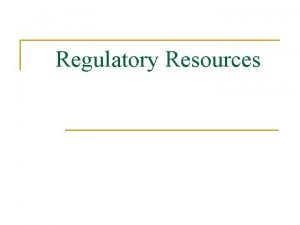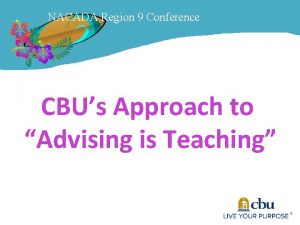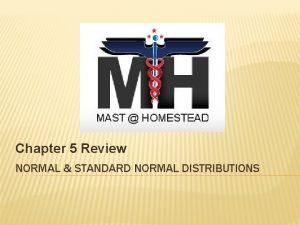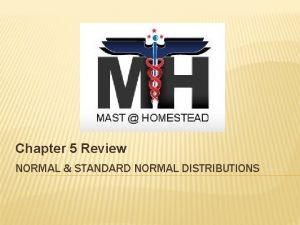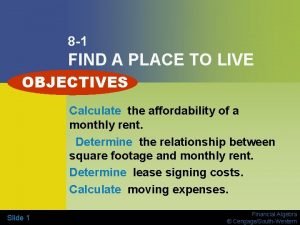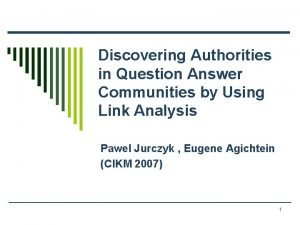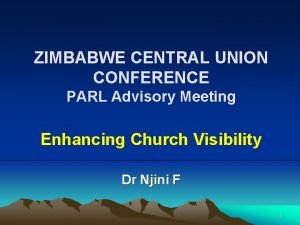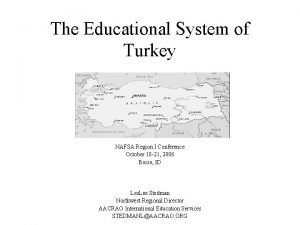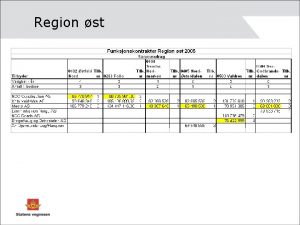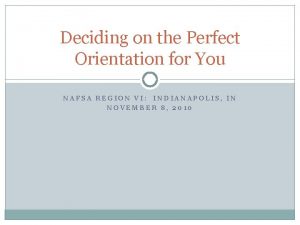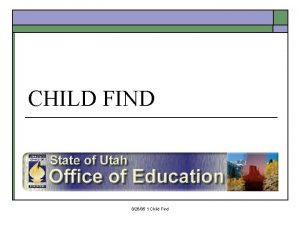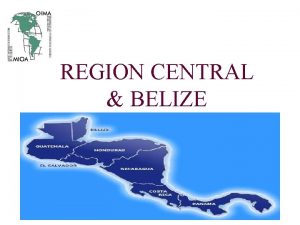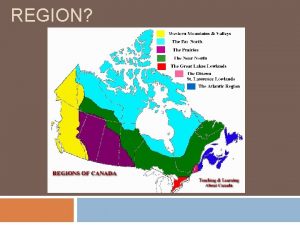Where to find answers NAFSA Region II Conference























- Slides: 23

Where to find answers NAFSA Region II Conference October 21 -24, 2008 Park City, Utah Shama Ali, Creighton University Deborah Kuiken, University of Arizona

Hierarchy of Authority Constitution Federal statutes Federal regulations, Administrative court decisions Agency policy and interpretive cables, memos & field communication Govt Agency operational manuals Individual guidance/interpretations

Immigration Law • The Immigration and Nationality Act (INA) • Illegal Immigration and Immigrant Reform Act of 1996 (IIRIRA)

Two Important Federal Agencies DHS State • CBP – Customs and • Consulates and Border Protection Embassies Abroad • ICE – Immigration and • Bureau of Educational Customs Enforcement and Cultural Affairs • CIS – Citizenship and Immigration Services

Sources of Immigration Law U. S Congress Executive Agencies Immigration Law The President Supreme Court and Federal Courts

Govt Interpretations of the Law • Agency interpretation is not law • Courts usually give great weight to an agency’s interpretation • Imp to understand govt interpretation

Federal Regulatory Agencies • • DHS – Department of Homeland Security DOS – Department of State DOL – Department of Labor DOJ – Department of Justice

Types of Resources Available • Federal statutes (laws) • Federal Regulations • Federal Agency websites, notices, cables, announcements, etc. • Internet, attorney websites • Publications • Professional organizations • Conferences, meetings, workshops, etc. • Professional colleagues

Code of Federal Regulations • • • 8 CFR 214 – Non-immigrant classes 8 CFR 248 – Status changes 8 CFR 274 A – Employment 8 CFR 299 – Forms 22 CFR part 62 – Exchange Visitor Program (J-1)

Ground Rules When Reading Regs 1. Is there more than one regulation relevant to this issue? 2. Is one regulation on this subject more specific than the other(s)? The more specific regulation always takes precedence over the less specific 3. Use a dictionary if needed to get the precise meanings of terms

Ground Rules When Reading Regs 4. Don’t go beyond the regulations. If the regs say that a student can work, it’s final. You cannot take the right away. 5. Don’t confuse school rules with immigration regulations. A violation of schools rules is not necessarily a violation of the regulations

Basic Framework When Dealing with the “Grey Areas” 1. Try to get a complete picture of the situation 2. Review the regulations sections that are relevant to the case 3. Review the NAFSA manual for regulatory & interpretative notes 4. Look up any other guidance provided by SEVP or ICE

Basic Framework When Dealing with the “Grey Areas” 5. Ask other colleagues how they handle similar situations on their campuses 6. Know your institution’s general attitude towards regulations 7. Consult with your General Counsel and other relevant offices on campus when developing a policy 8. Discuss issues within office to make sure there is a consensus on an approach and make a note of your rationale

Basic Framework When Dealing with the “Grey Areas” 9. Keep written record of policy and consistently apply to similar situations 10. Policy is a living document and should be periodically reviewed and adjusted if needed

Important Things to Remember” • • Questions do not always have answers Things change often Timing is important All information is not reliable or accurate

Things Can Do Things You. Can. Do Do • Read the regulations • Learn government language, terms, and definitions • Learn what other relevant agencies do • Become familiar with relevant websites • Talk to colleagues • Pay attention to notices and communications from agencies • Read manuals and publications • Attend conferences, workshops, and professional meetings. • Join listservs and networking communities

Case Scenarios

Case Scenario #1 A student says the following during an advising session: I can't register for a full course load this term. I know that four courses or more constitutes full-time. All I have left to take before I graduate are four courses but one of them is only offered next term. So, I'll be taking three courses this term and one course next term. That's okay, isn't it?

Case Scenario #1 Resources • 8 C. F. R. § 214. 2(f)(6)(iii) • NAFSA Manual • Other considerations – If none of the RCL options apply to student’s situation, s/he will need to add a course to comply with the full course of study requirement

Case Scenario #2 A student is out of status because they did not extend their I-20 in a timely manner. It has been 3 months since the student and you notice that s/he is out of status. The student would like to apply for reinstatement. They would like to know if they can continue working on campus? How do you advise the student?

Case Scenario #2 Resources • 8 C. F. R § 214. 2 (f)(9)(i) (Employment) • 8 C. F. R § 214. 2 (f)(16) (Reinstatement) • SEVP Guidance http: //www. ice. gov/sevis/employment/faq_f _on 1. htm • NAFSA Manual • Institutional Policy and interpretation

Case Scenario #3 • A student decides to transfer from School A to School B in the middle of the semester. The student wants to leave School A on the last day to drop classes that semester. School A doesn’t want to release the record because they don’t consider the student eligible for a transfer. School B wants the record transferred because they consider the student eligible and want him/her to come to their school. The student will begin classes 2 weeks after dropping classes at the new school. Present both sides of the arguments representing School A & School B’s points of view. How would you handle this situation?

Case Scenario #3 Resources • 8 C. F. R. § 214. 2 (f)(8) • SEVP Guidance: http: //www. ice. gov/sevis/f_1_transfers. htm • NAFSA Manual
 Nafsa issue net
Nafsa issue net Nacada region 9
Nacada region 9 Intermuscular spaces of scapular region
Intermuscular spaces of scapular region Active region and saturation region
Active region and saturation region Find the probability of z occurring in the indicated region
Find the probability of z occurring in the indicated region Find the probability of z occurring in the indicated region
Find the probability of z occurring in the indicated region 8-1 find a place to live financial algebra answers
8-1 find a place to live financial algebra answers Facebook us new yorktimes
Facebook us new yorktimes Find the answers
Find the answers What is hits algorithm
What is hits algorithm In your notebook write questions
In your notebook write questions Zimbabwe central union conference
Zimbabwe central union conference World cashew conference
World cashew conference Ohio state wbs
Ohio state wbs North west kenya conference
North west kenya conference Patient centered medical home conference
Patient centered medical home conference Vienna conference on instrumentation
Vienna conference on instrumentation Hokkaido
Hokkaido Chef culinary conference
Chef culinary conference Nerc nahro conference
Nerc nahro conference Stalin political cartoon
Stalin political cartoon Yalta conference agreements
Yalta conference agreements Arma conference 2017
Arma conference 2017 Map of scramble for africa
Map of scramble for africa
